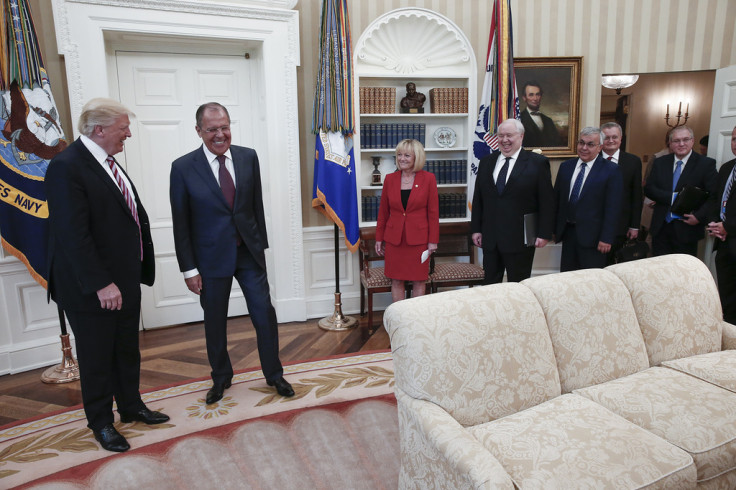Spy in the White House? Russian photographer hits out at claims he planted bug in Oval Office
Tass photographer Alexandr Scherbak branded spying accusations 'nonsense'.

The photographer who was given exclusive access to the White House Oval Office during a closed state meeting between US president Donald Trump and Russian Foreign Minister Sergey Lavrov has taken to social media to deny allegations he was there as a Kremlin spy.
Alexandr Scherbak, a photographer for Russia's Tass state news outlet, was the sole person allowed to photograph the two men after American journalists were refused entry. The optics were poor as the meeting came roughly 24 hours after Trump fired James Comey, then-FBI director.
"I am urging US journalists not to lose their professional dignity and not to pin the blame on other people for their failure in organising the photoshoot and the failure to provide access to their media," Scherbak wrote on Facebook this week (11 May).
The exclusion of US publications was deemed suspicious by many reporters and government officials.
Colin Kahl, former national security advisor during the Obama administration, tweeted: "Was it a good idea to let a Russian [government] photographer & all their equipment into the Oval Office?"
The theory picked up traction as former deputy director of CIA, David Cohen, replied: "No, it was not." Washington Post journalist Barton Gellman wrote: "US photographers barred from Lavrov meeting. Russian govt brings cameras and a whole kit bag of electronic equipment. Into the Oval."
The insinuation (which has precedent) was clearly that the photographer, at the instruction of the Russian security services, could have smuggled surveillance tools and planted them in the White House. Reflecting on the situation, Scherbak said such allegations were "nonsense."
He wrote: "There was nothing unusual about the photoshoot with Trump and Lavrov. Everything was typical. After the meeting with Tillerson I was taken by a US representative to the White House. I was scanned, patted down, and then sniffed by canines.
"Then I was waiting for the arrival of our delegation in a room in the White House.
"I was introduced to a female photographer who works there and was told to stay by her side as she knows all the protocol details. I took only two cameras to the photoshoot, I left all my stuff, including my cellphone, in another room as I was told to do.
"The photoshoot was usual, with the delegations exchanging handshakes, a verbal exchange, and then the meeting began. We worked for just a minute and that's all.
"I left the Oval Office and returned to the room where I was staying. When the meeting was over, we went to the Russian embassy for a news conference. And then we took off."
Deadly serious Q: Was it a good idea to let a Russian gov photographer & all their equipment into the Oval Office? https://t.co/6WA4NxHxID
— Colin Kahl (@ColinKahl) May 10, 2017
Robert Pritchard, former deputy head of the British government's Cyber Security Operations Centre and current associate fellow at Rusi, told IBTimes UK the opportunities for the photographer to do anything nefarious would have been limited.
"Whilst I wouldn't disagree with the sentiment [of suspicion] I am presuming they weren't left alone or allowed to go poking around," he said, adding: "I would assume there are procedures for sweeping the Oval Office – it's used to host various foreign dignitaries and their entourages."
He continued: "Having finally got to meet the man you so much wanted to get into power [...] would you risk it by trying something? To be clear I'm not saying I think it was a marvellous idea, but probably, at the end of the day, it caused limited exposure."
A White House statement said: "We were not informed by the Russians that their official photographer was dual-hatted and would be releasing the photographs on the state news agency." Sources told the Washington Post "sophisticated" espionage devices may indeed pass screening.
© Copyright IBTimes 2025. All rights reserved.






















